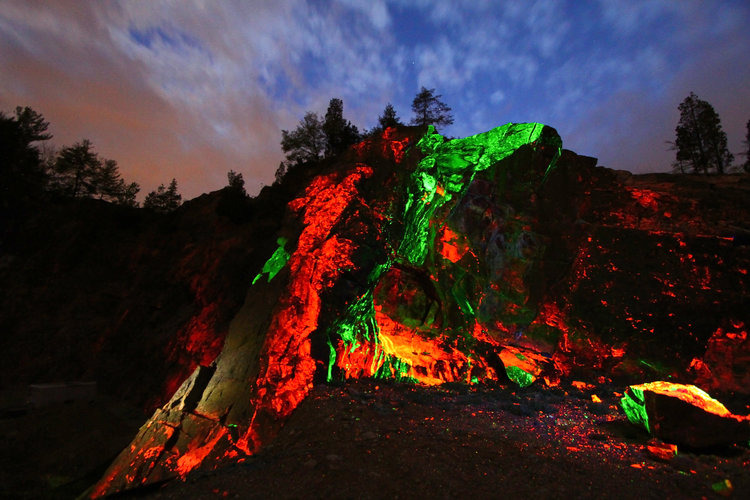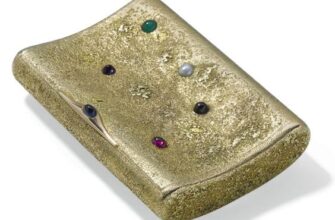An interesting decision - to open a museum of geology in an abandoned mine came up with the Hauck brothers. In 1990, they brought their idea to life. Today, this unusual museum in the city of New Jersey, USA, is open to all lovers of geology. I think it's an interesting idea!
The Rainbow Mine Tunnel is a beautiful natural vein of fluorescent zinc ore.
History of occurrence
The mine was one of the oldest in the United States, having begun operations around 1739, and during its existence it produced over 11 million tons of zinc ore. At the time of closure, it was the last operating mine in the state of New Jersey.
Ronald Mishkin, who is about 90 years old and the oldest worker at this mine, says that many of the employees were immigrants from Poland, Russia and the Slavic peoples, gradually settlements were formed around the mines with development and extraction of metals.
Well, today it is an interesting mining museum called Sterling Hill.
And the most interesting exhibits are samples that fluoresce in certain light.
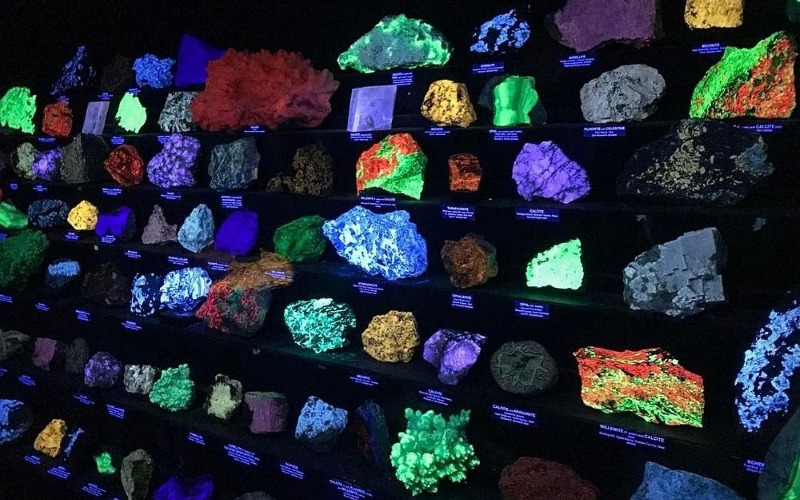
Pale, flat rocks and minerals turn bright oranges, pinks and greens when the overhead light is turned off. They turn red or form otherworldly glowing veins that were not originally visible.
This is a real wonder of the world, literally and figuratively. About 90 minerals found in this region fluoresce, and more than 20 of them are found nowhere else in the world.
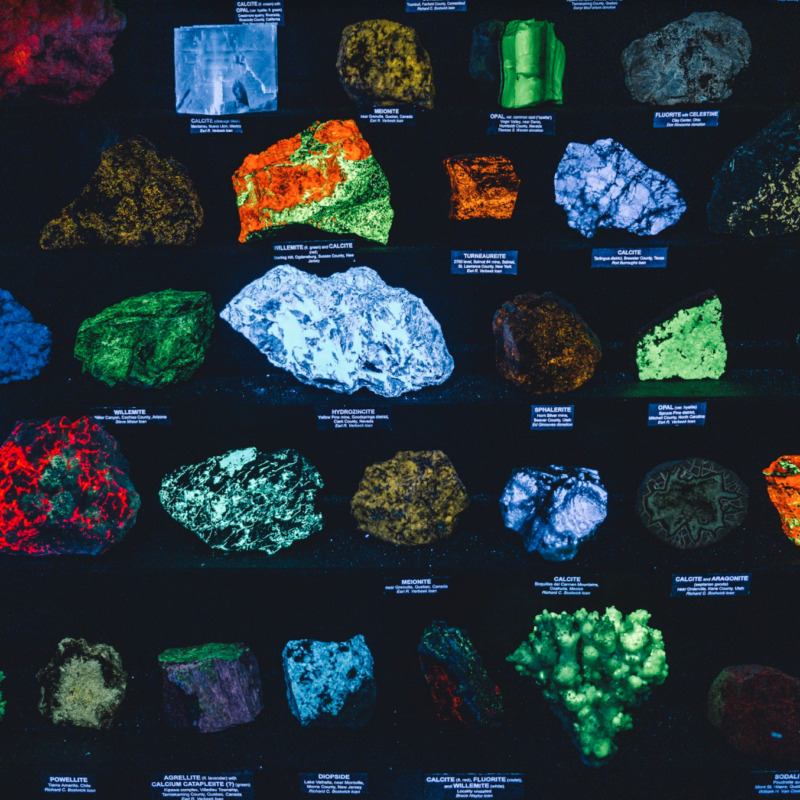
Here is a "collection" of dinosaur bones, which are found in abundance in America:

But the main "heroes" are, of course, stones!
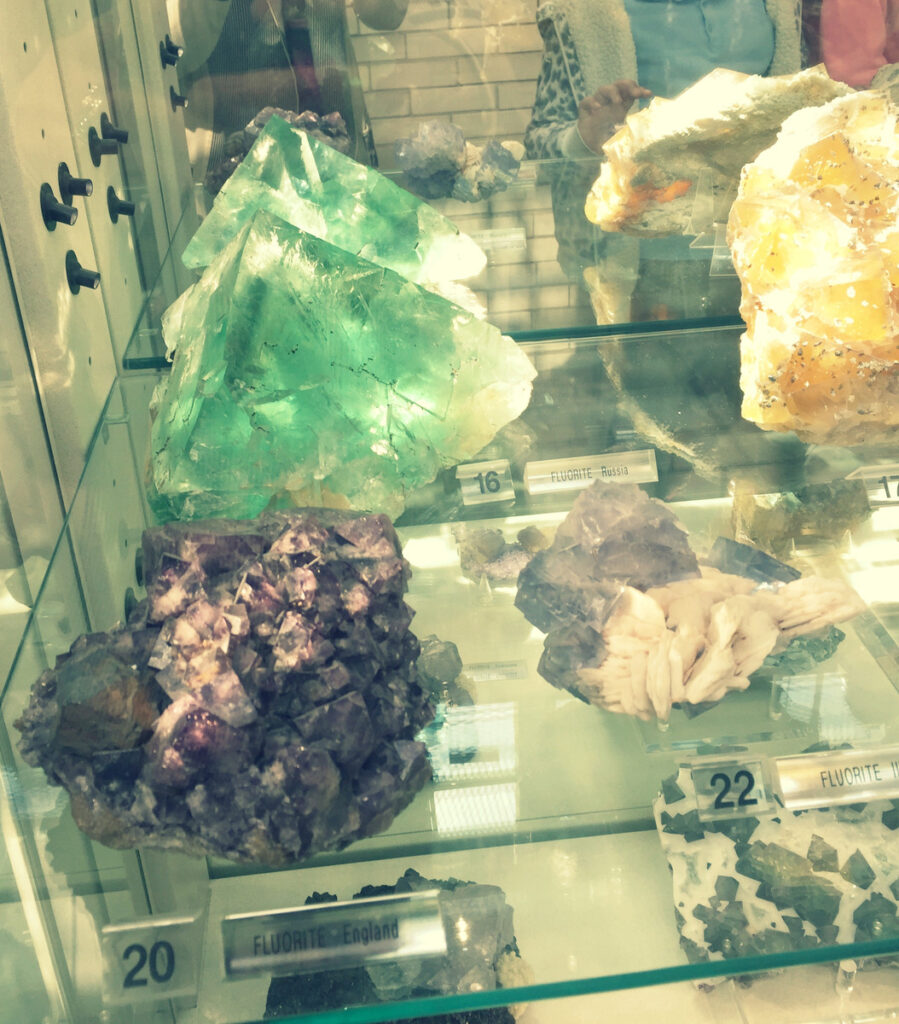
Minerals usually glow not by themselves, but in response to some external source of energy. Typically, this energy source is ultraviolet light. About 15% of the approximately 5000 known mineral species are known to fluoresce under ultraviolet light. Others fluoresce when exposed to X-rays, an electron or proton beam, or even mechanical stress (such as when scratching, hitting, or crushing a mineral).
